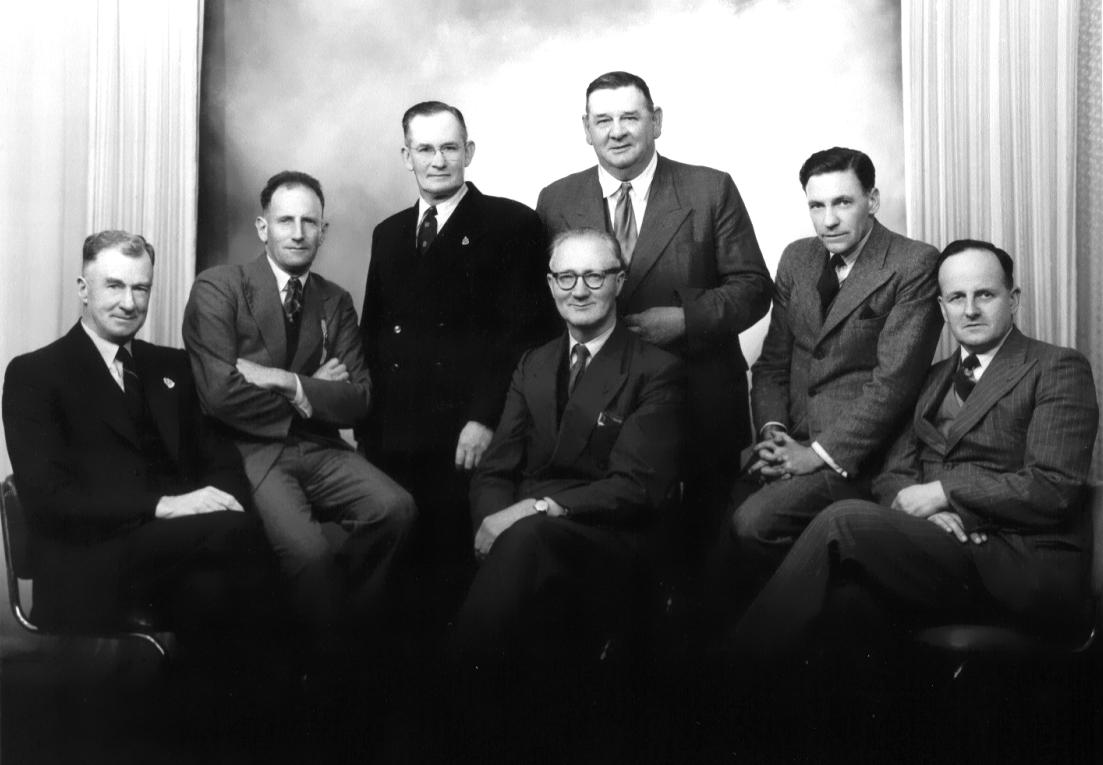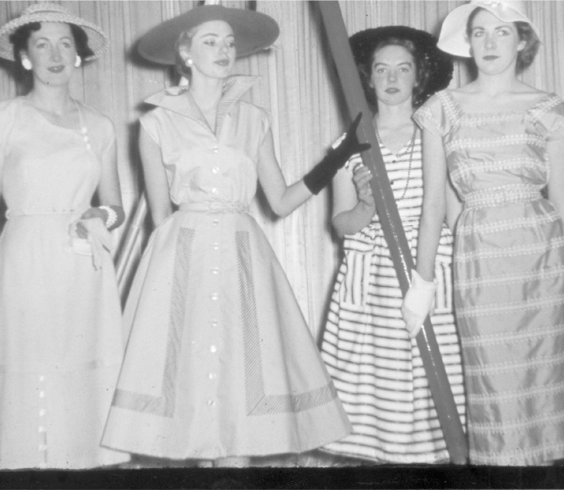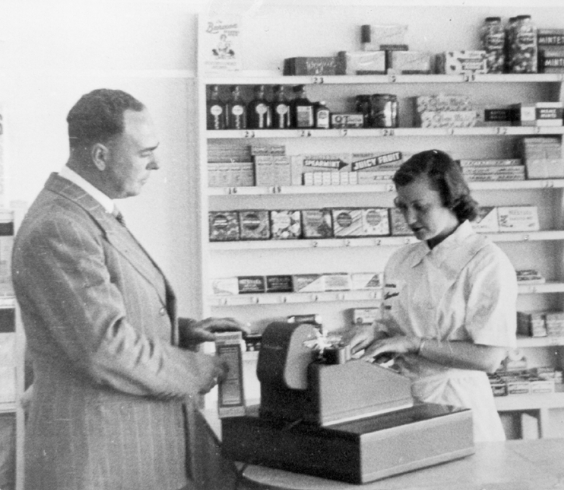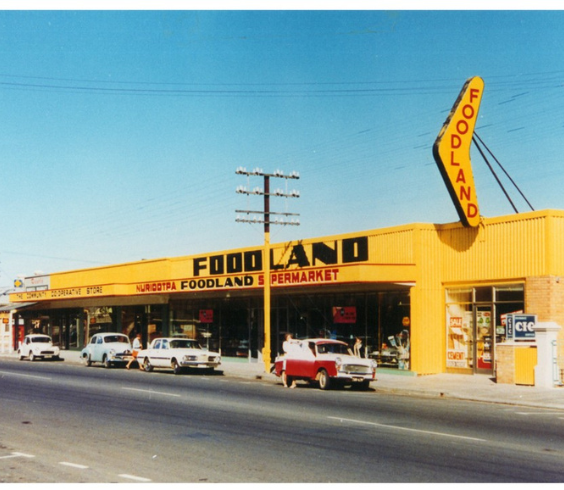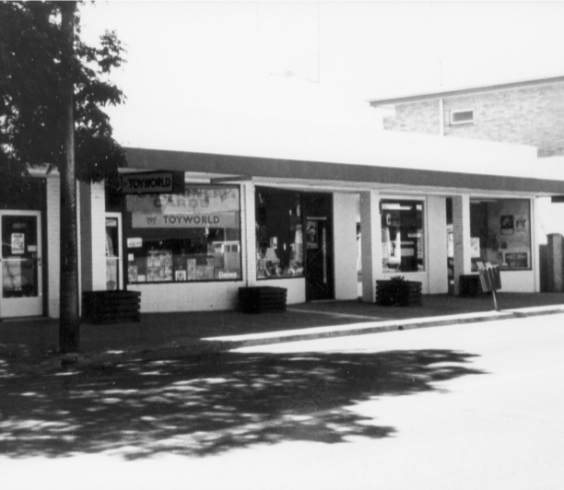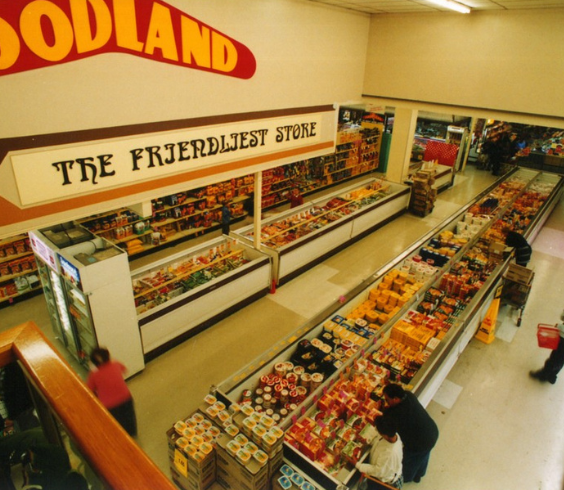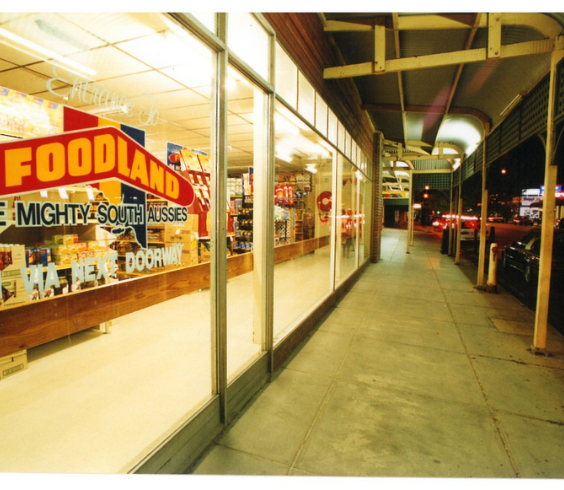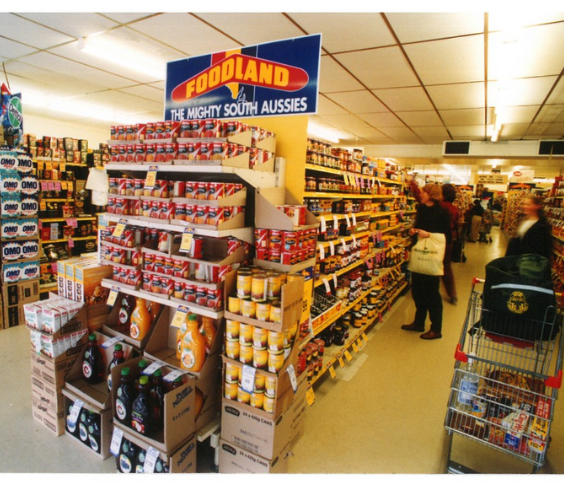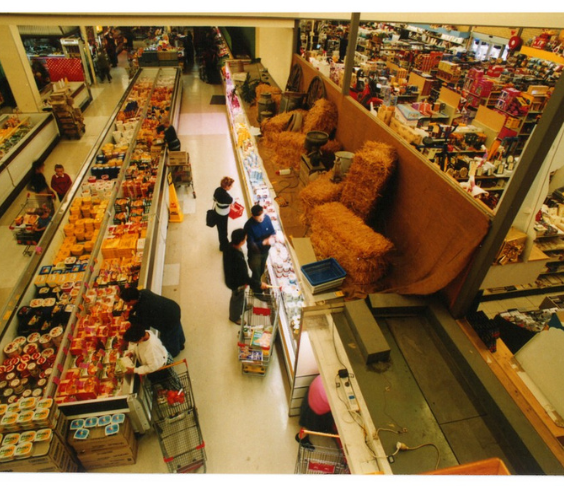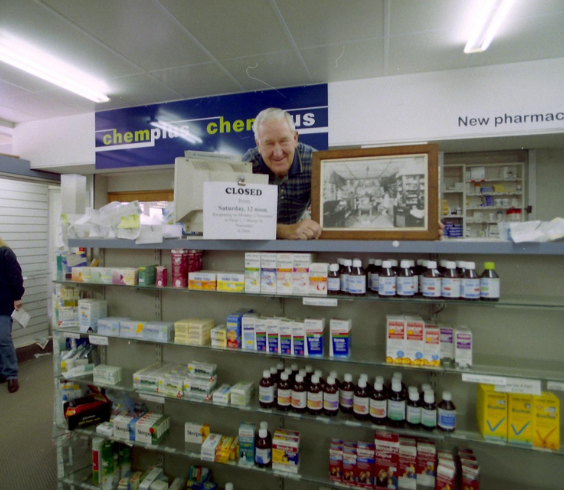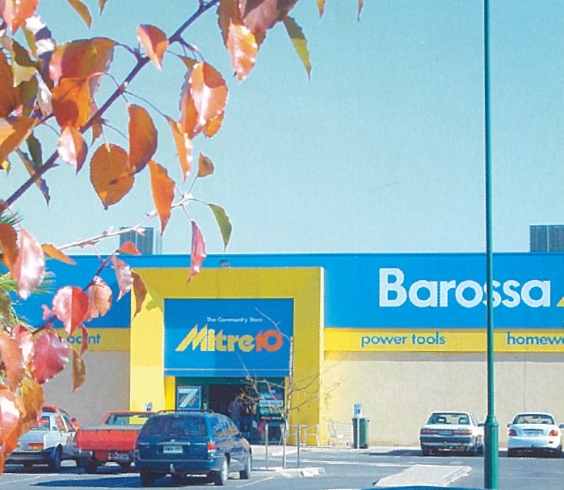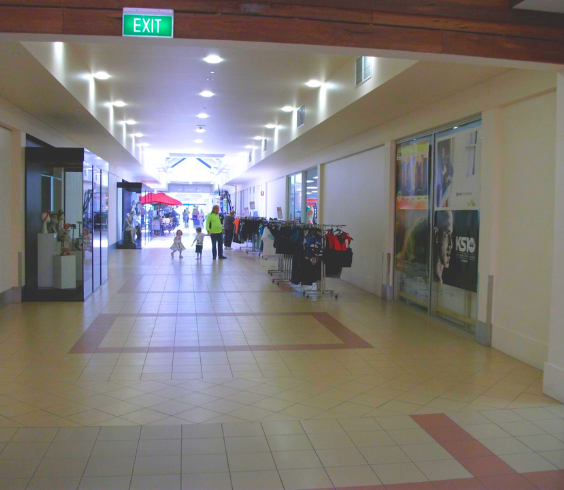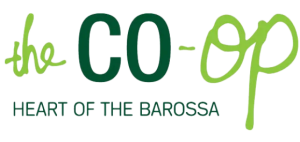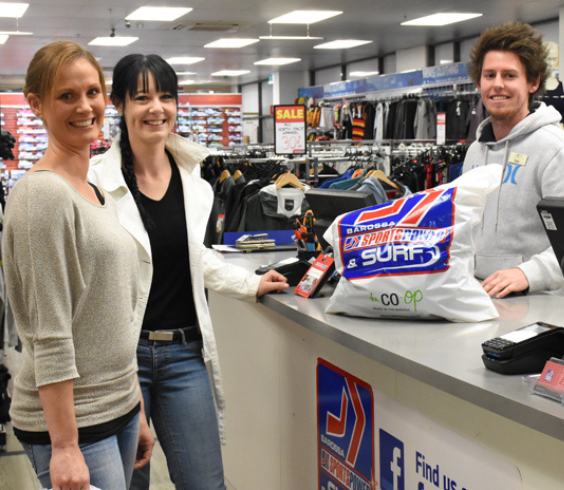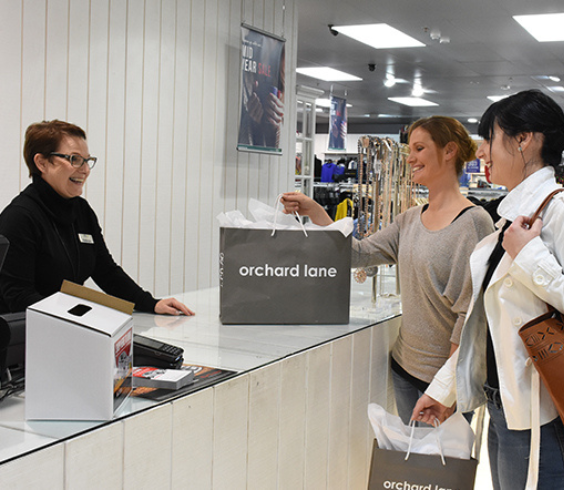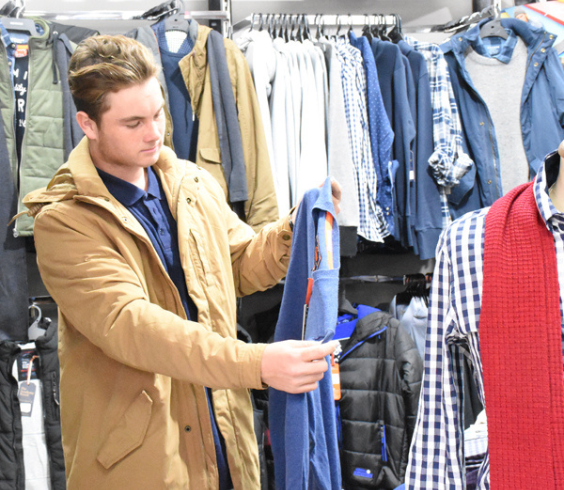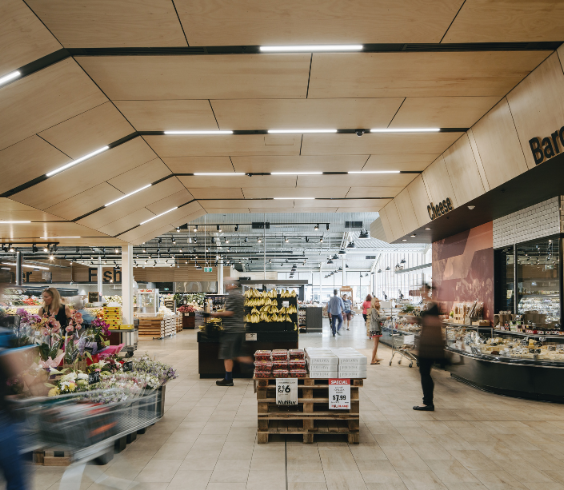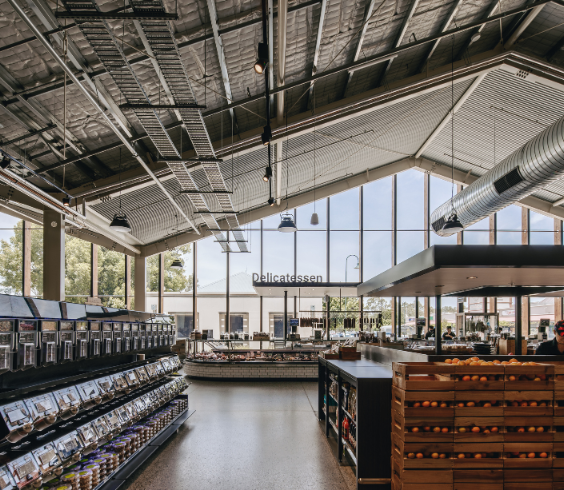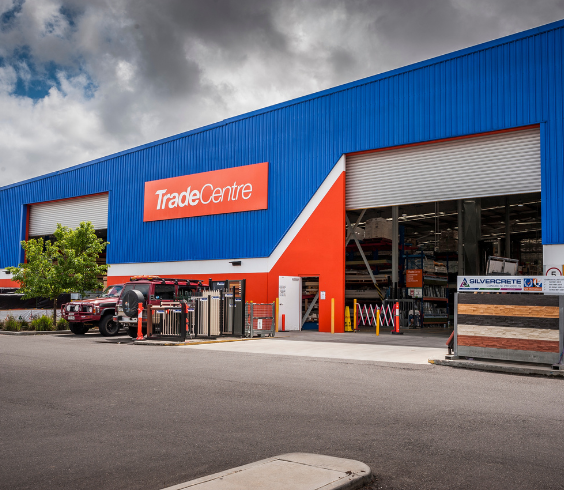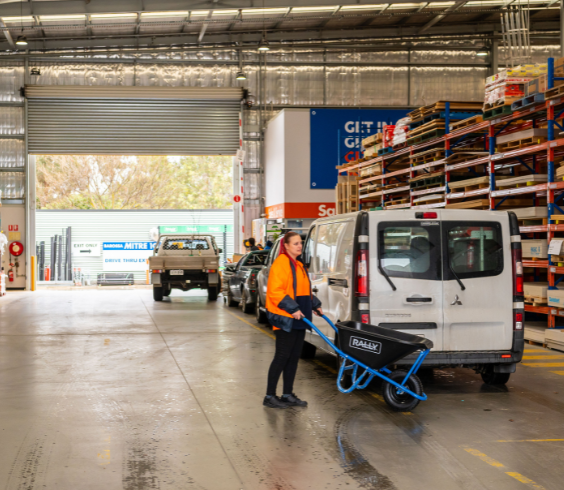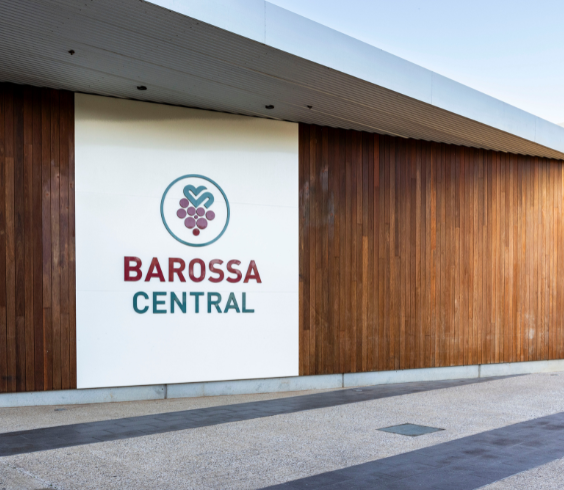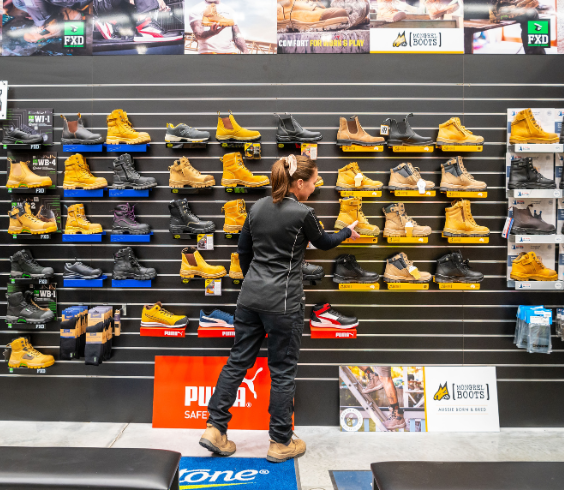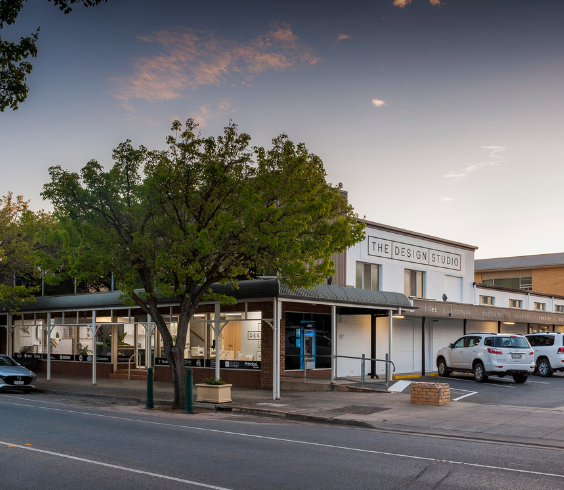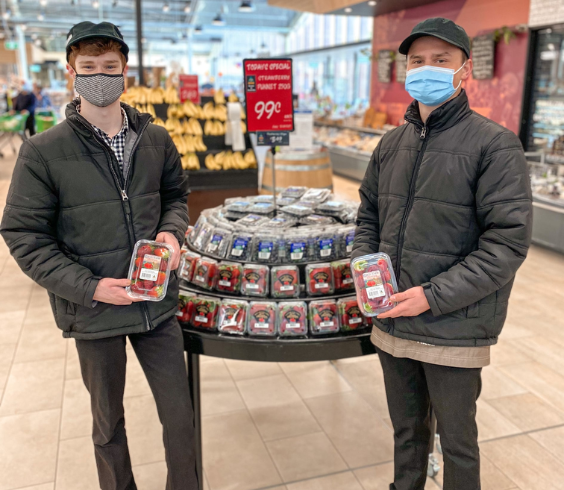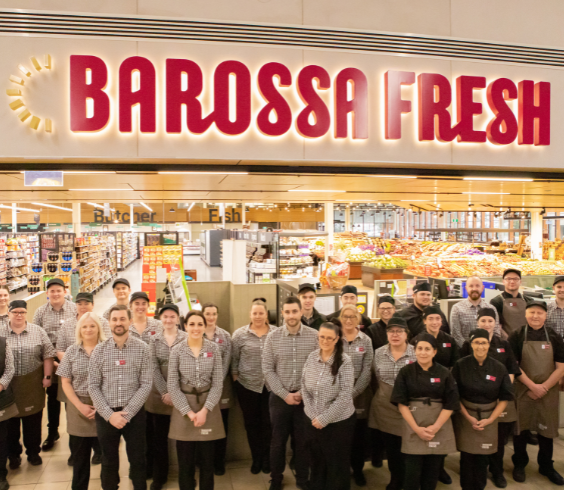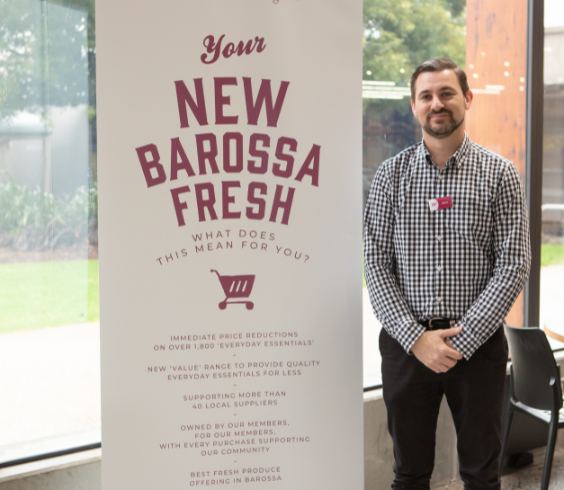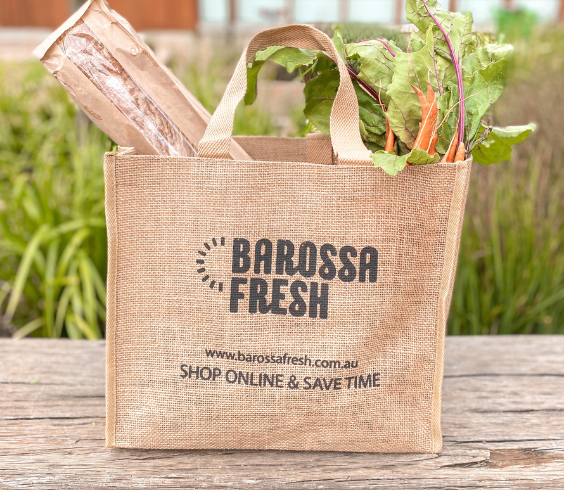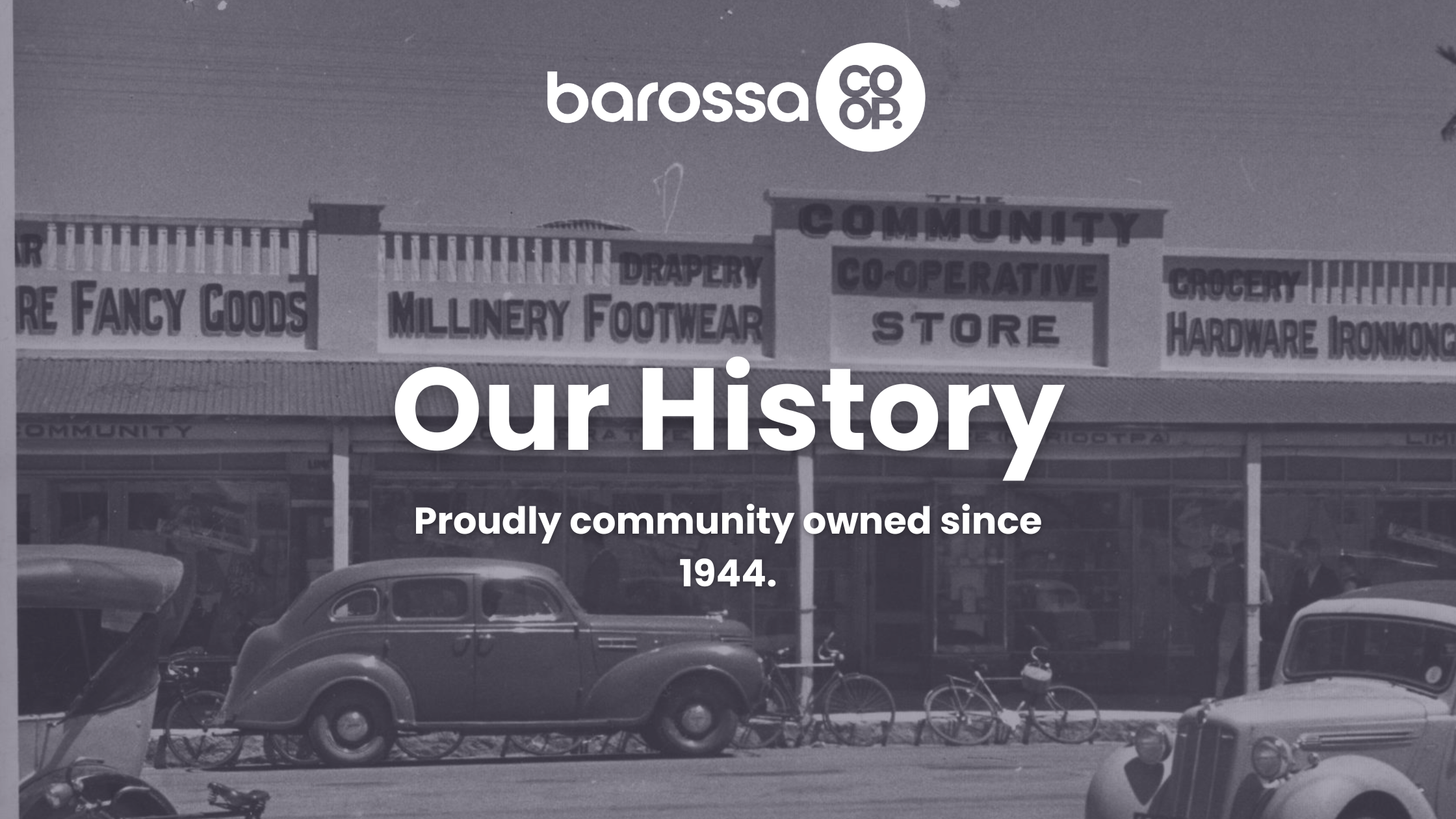
Celebrating 80 years in 2024, Barossa Co-op proudly remains 100% community-owned and operated by its members of the Barossa community.
Barossa Co-op has belonged to the people of the Barossa for nearly eight decades. It is the only Barossa business ever owned by the community and ever since 1944 it has remained true to the original vision of its founders – to provide the Barossa with a thriving retail co-operative in which they are always able to have a say.
From a small general store in 1944 to a world class shopping destination in the present day, Barossa Co-op is a testament to the power of community.
Read on to discover our growth from a small general store in the main street of Nuriootpa to a world renowned community co-operative and home of South Australia’s largest independent supermarket, Barossa Fresh.
Where it all began.
1944
Harold Sheard, a manager of general stores in both Nuriootpa and Angaston, offered the leasehold of his Nuriootpa store to the community after the death of his son in 1942, in order to retire quietly with his wife Rose in Port Elliot. The store was officially taken over by the community on March 1st 1944, under the management of Mr Harry Craker.
The Co-operative Store rationalised shopping in the Barossa: Sheard’s Angaston store was closed and its manager, Harry Craker, became the Co-op’s first manager and secretary. Hastings (formerly Trigg’s store) in Nuriootpa was also purchased and closed as part of the centralised approach.
On October 16th 1944, the new Community Co-operative Store opened its doors to the Barossa Valley.
Sheard’s Service Store, 21 Murray Street.
The post war era – becoming a community store.
The original Community Co-operative Store.
The 1944 Board.
The 1940’s
The post-war 1940’s was an exciting time of growth in the Barossa, but also an era where shopping services were frugal. The shop had changed very little from the early days of the century. There were no fridges in the Co-op store, and butter was still collected directly from farmers. Shop assistants climbed ladders for groceries and a pound of sugar was fourpence.
Harry Craker’s untimely death in February 1948 led to the appointment of Roy Hodgson, a returned serviceman who had once run his own general store at Paskeville on the Yorke Peninsula. Roy, remembered as a ‘manager of ideas’, was appointed in April 1949 and proceeded to take the Co-op from a nostalgic 1920s style service store into a more modern era of customer promotions, self service and improved buildings.
His first move was to upgrade the facade of the store from its Victorian verandah street frontage, with its characteristic posts and ironwork to a modern brick, steel and plate glass facade. The drapery department was built to add to the old ex-army Sydney Williams hut at the rear of the store.
In 1949, a staff social club was formed and a community Christmas celebration was planned to revive community spirit. It received the sanction of the Board and local wine personality Bill Seppelt also backed the idea with a donation of £100. A district choir was formed by Ron Schulz, the park was hired, and sideshows were set up to raise money for the next year. A big Christmas tree was also decorated. It was one of the many events which have focused statewide interest in the Barossa over the years, with Adelaide radio personality Mel Cameron from 5DN compering the first show, then broadcasting the recording on 5DN on Sunday evening. More than 300 children were given presents and it grew each year until the entire Barossa community would roll up for a night of free fun.
A growing Barossa.
The 1950’s
During the 1950s, a refurbished grocery and hardware department was also added along with the store’s first coolroom.
The cheese store, which started in 1950, was one of Roy Hodgson’s obsessions, and it rapidly developed a reputation as the best vintage cheese store outside of Adelaide. Cheeses came from Murray Bridge, Mount Compass, Lobethal, and other small dairying towns through the Adelaide Hills, and were stored in a cellar where they had to be carefully turned every day and monitored as they matured. Two to three hundred cheeses were matured on the premises, largely as a result of demands from local winemakers who wanted the ripe cheddar for entertaining clients and for their vintage celebrations.
The early 1950s was also the time when several major fashion parades were held by the Co-operative Store in the Nuriootpa Institute in aid of the Mothers and Babies Health Association. Mannequins from Adelaide were booked and more than 300 people attended the first event, a cabaret style parade using a Middle Eastern Arabic theme, complete with sheik’s tents.
By 1952, the growing population of Nuriootpa and the Barossa Valley increased sales at the store. In April of that year, the board of management came to a conclusion that in order to meet the demand, The Co-op needed a self-service store. To this time, every item purchased was sold ‘over the counter’.
Fashion parades, held by the Co-operative Store.
Customers could now purchase over the counter.
A time of change: the introduction of Foodland.
Becoming a Foodland
Foodland supermarket, opened in 1965.
The 1960’s
The Co-operative decided to become a franchisee for the independent Foodland supermarket chain and transformed its old grocery department into a modern self-service supermarket. The building of the supermarket was accompanied by the demolition of old buildings in the vicinity of The Co-op store, which provided parking spaces for as many as 200 cars.
A new facade, painted in bright yellow with the characteristic boomerang logo, was built and the store was extended to the north to encompass hardware.
A new and expanded supermarket opened on the 9th of December 1965, but was beaten by the opening of a new Woolworths supermarket at nearby Tanunda two days earlier. However, the new Co-operative supermarket was to be such a success that the Woolworths supermarket chain withdrew from the Valley within two years.
The idea gained in popularity and before long the supermarket had refurbished its grocery section, purchased its second shop deep freeze and added a new deli and fruit and vegetable section.
Bert Schultz, who was appointed manager in April 1966 on Roy Hodgson’s death, was the inheritor of the new supermarket-style Co-operative Store, and he presided over an era of change in customer service: from delivery boys and a farm drapery and clothing service to modern supermarket retailing.
Expanding with the community.
The 1970’s
In 1970, manager Bert Schulz extended the hardware store, the storeroom was rebuilt and enlarged, and the old ex-war Sydney Williams hut was eventually sold. A coffee lounge was also built upstairs, the supermarket fruit and vegetable and dairy section was expanded and the first butcher shop was installed. Storage and space continued to become an issue for management but further building developments at the rear of the premises, coinciding with land purchases, gave the store the room it needed for growth. In 1978, a garden centre was added and in the next year the hardware store became part of the United Hardware chain, offering improved discounts to customers. The Co-op also expanded its offerings in regard to toys, menswear and hardware.
The Foodland supermarket checkouts.
An era of expansion.
The original Toyworld store.
Refurbishments on the building – 21 Murray Street
Interior of the Foodland supermarket, now Orchard Lane.
The 1980’s
The 1980s was spent expanding storage even further and modern cold rooms and freezers were installed.
The Reusch shops in Gawler Street, formerly the public library and Department of Social Security offices, were also refurbished to make way for a stationery sales area and a Toyworld franchise store. Other franchises included Mensland for menswear and True Value hardware.
When Bert Schultz retired in 1982, the store had grown to become a modern, one stop shopping centre. The store now looked to a future of computerisation, property development and retail expansion under a new, experienced retail manager, David McArthur. David had a strong background in retailing, having trained with the national department store chain Myer Limited. His first challenge was to upgrade the accounting system of the store, to make the management of the rapidly growing customer base more efficient. During a two year transition period, the Wang computer system was commissioned and a plastic membership card was also introduced to overcome the time consuming job of counting customer dockets at the end of each year to pay their rebate.
It was also a time of change in the Board hierarchy. Cec Robin, who had been chairman since 1975 and had been an original Board member in 1944, handed over the chairmanship to Bryce Hood in 1981. Cec is credited as the longest serving Co-operative Board member and one of its most tireless workers, eventually retiring in 1983.
One of the first property purchases during Bryce Hood’s era was the Tom’s Supermarket at 11 Murray Street, which was refurbished and re-opened in March 1987 as a furniture store.
Extensive changes also took place on the Community Store site. Modern slim-line fixturing and pelmets replaced the old dark timber surrounds of the early years, new soft furnishings and lighting were introduced and in March 1987, a $2 million extension was opened providing an extra 2000 square metres of floor space, doubling the softgoods area and making more room for the successful Toyworld franchise. A new verandah facade was built, which bore a remarkable resemblance to the original Sheard’s shopfront. Inside the store, state of the art technology such as computerised price scanning was also introduced for greater efficiency. The funding of this new extension, the most expensive in the history of the store, was made possible by a far-sighted change to the Community Co-operative Store’s Constitution to allow for a rotating levy structure. A percentage of the members rebate was allocated into a 10 year levy fund which was loaned back to the store interest free. In 1986, plans for a new and expanded store began, with construction completed in 1998.
In 1988, the chairmanship of the Board changed from Bryce Hood, who had been an untiring worker towards the building renovations, to David Obst who was to preside over yet another dynamic era.
Becoming the centre of Barossa shopping.
The 1990’s
The continued upgrading of the store’s facilities saw the introduction of central heating in 1990 and the final ‘crowning’ of the new extensions was the work on the roofline and ceilings of the store during the early 1990’s.
Once the major structural building improvements had been completed, the Board and management started looking to the future, particularly at business and property expansion. One property experiment was the Newlands Department Store and Mitre 10 in Victor Harbor in 1988. Although the hardware store was very successful, the department store battled against the ebb and flow of holidaymakers and it was decided not to renew the lease after the first three years and the venture was wound up in January 1992.
As strong supporters of the cultural and economic importance of the main street shopping precinct of Nuriootpa, the Community Store started purchasing Murray Street properties as they came onto the market. This included the Sobotta Bakery building in 1990, which was leased to lunchroom and bakery clients and restored with its traditional verandahs; as well as the old State Bank administration building in 1991 which was renovated and leased as a restaurant. In 1993 a shoe store, located at 13 Murray Street, was purchased and later demolished to make way for more carparking in September 2003. A site for a new Mitre 10 was also purchased in 1994 and computer and register systems across the stores were upgraded.
The new shopping complex was completed and opened on Monday November 2nd 1998, and was named the Barossa Regional Shopping Centre. This name was to ‘encompass the whole Barossa Valley area and express the regional nature of the Centre’. The complex was built to reflect the character of the Barossa, with the décor of the mall representing a winery cellar look. The Foodland supermarket was relocated to the new shopping centre, and opened as Foodland Barossa Fresh. The supermarket décor included milk cans and soft blue and yellow colours, providing a ‘traditional Barossa feel’. The official opening was held on 12th December 1998, and the complex was opened by the Governor of South Australia, Sir Eric Neal, who described the shopping centre as ‘world class’.
The other departments of the original Co-operative store, including Toyworld, mens & ladies wear, and home living remained at the original 21 Murray Street building to become a department store. The Chemplus chemist made the move to the new shopping centre as a tenant.
A Betta Electrical franchise store was opened the following year in March on the 21 Murray Street property, to keep up with technological advancement and community demand for electronics.
The Community Store prior to the new shopping complex
The original Chemplus chemist, now Rod & Spur.
The Barossa Regional Shopping Centre, opened 12th December 1998.
New millenium, new Co-op.
Barossa Regional Shopping Centre after Mitre 10 upgrade.
The expanded Barossa Mall, with additional carparking.
The 2000’s
The new shopping centre continued to expand and tenancies began to fill. A café opened in the mall across from Foodland Barossa Fresh – ‘Bean Se-juiced’, as well as a Wendy’s ice cream franchise, music and CD store, and Australian Central Credit Union bank branch. The music and CD store closed later in the decade and a Flight Centre opened in its place.
In April 2002, the Co-op launched its new logo – Barossa Community Store. David McArthur explained that ‘the new logo is a simple, modernist approach’ and that ‘this change is necessary because many of our overseas and interstate suppliers perceive the ‘The Community Store’ as representing a small corner store.’ The inclusion of the name Barossa was also representative of the wide area from which the Co-op drew its membership.
The department store remained home to mens and ladies fashion as well as children’s wear, manchester, shoes, and sports. In August 2002, the Barossa Sports store joined the Sportspower franchise, and was renamed Barossa Sportspower.
The refurbished Mitre 10 Solutions was completed in 2003, giving the storefront a refresh and a wider in-store range.
The shopping centre was again expanded in 2009, with construction beginning in January and opening in December. This new extension linked together the Mitre 10 building with the original shopping centre, as well as creating more mall tenancies.

The new ‘Barossa Community Store’ logo.
Becoming a world class shopping destination.
The 2010’s
Both ladies and mens fashion were moved from the department store to the new Barossa Mall into their very own stores, named ‘Orchard Lane’ and ‘Rod & Spur’. Australia Post took up a tenancy in the Mall alongside Nuriootpa Newsagency and a new telecommunications store, ‘Barossa Communications’.
In November 2010, the Board announced its new logo: ‘The Co-op: Heart of the Barossa’, reinforcing the unique nature and central role the Co-op played in the region.
The 21 Murray Street building was renamed ‘Barossa Home Living’, and an expanded and refurbished store for Betta Electrical opened in 2011.
In 2016, in order to keep up with demand and the technological advances of the internet, the Foodland supermarket introduced an online shopping service, named Co-op Fresh. This included platter orders, delivery to customer homes and click and collect services.
Community demand continued to increase, and after many years of extensive community consultation and detailed planning, the construction of a new and redeveloped shopping centre commenced in May 2016. This included a new and again expanded Barossa Fresh Foodland supermarket. This new supermarket would offer an expanded ‘market style’ fresh food and local produce offer, as well as becoming a food hub for the region.
The previous extension of Barossa Mall was demolished to make way for the redevelopment, and Orchard Lane, Barossa Sportspower & Surf, and Rod & Spur were moved back to the 21 Murray Street building. Mitre 10 was reopened in March 2017 at a brand-new spacious building on Gawler Street, complete with a Garden Centre and Trade Centre.
In October 2017, the completely redeveloped shopping centre was completed and named The Co-op, along with the brand-new Co-op Fresh Foodland supermarket. Trading commenced on Wednesday 18th October 2017 and the official opening was held on 26th November 2017. The new supermarket included an in-store café, butchery, cheese room with over 150 cheeses, and an in-store bakehouse. The fresh produce departments were also enlarged to accommodate the abundant local produce wanted by customers. A special ‘Barossa Larder’ section was also implemented to feature Barossa products.
The shopping centre soon welcomed other tenancies alongside the supermarket, such as Cheap as Chips, ALDI, Angas Park Cellars, Specsavers, Flight Centre and more. The Foodland supermarket space in the Barossa Regional Shopping Centre building also became an undercover carpark space.
In 2019, the logo was changed from The Co-op: Heart of the Barossa to The Barossa Co-op, to further reenforce its connection to the Barossa community.
The Co-op: Heart of the Barossa logo.
Orchard Lane, Barossa Sportspower & Surf, and Rod & Spur, in the Barossa Mall.
The Co-op & Co-op Fresh Foodland supermarket, opened for trading October 18th 2017.
Barossa Mitre 10, opened in 2016.
Aerial footage of redevelopment progress – 2016/2017
A modern day Co-operative.
Barossa Central, Barossa Workwear and The Design Studio.
The COVID-19 pandemic.
Barossa Fresh, launched and rebranded in July 2021.

The Barossa Fresh logo.

The current Barossa Co-op logo.
The 2020’s
The stores were affected by the COVID-19 pandemic in 2020, with the retail stores closing during lockdowns and otherwise operating with limited hours. Co-op Fresh Foodland remained open throughout, placing purchase limits on items such as hand sanitiser, disinfectant toilet paper, rice, meat and other essential items to extend supply. Mask mandates were put in place, affecting both staff and customers. The store extended trading hours as well as introducing priority hours for seniors, pensioners and disabled, as well as sensory, emergency & healthcare. A trolley sanitiser was also installed in December 2020 to further assist in the upkeep of hygiene and sanitisation in-store. This machine became a permanent fixture in the store post-pandemic. Later in 2020 there were limits of how many customers could shop in-store at a time, and QR code registration for entry was introduced by the government in December 2020 through to 2021.
In April 2020, the shopping centre was renamed Barossa Central with a new logo, in order to encompass the Barossa Co-op stores as well as tenants within the shopping centre. Barossa Toyworld was moved back to the 21 Murray Street department store building and The Design Studio opened in its place in 2021. Barossa Workwear, a new internal store adjacent to Rod & Spur, opened in 2020 to provide the community’s trading businesses with apparel.
In July 2021, the supermarket ceased its 57-year agreement with the Foodland franchise and on July 1st 2021, it was renamed Barossa Fresh, becoming South Australia’s largest independent regional supermarket. This change included a vibrant rebranding, and the introduction of two online delivery vans, Basil & Cherry.
In October 2022, the Barossa Co-op branding was refreshed with a modern and fresher look to begin the new decade. This new logo communicates the co-operative’s aspirations for being Barossa first, progressive, expansive, community owned and a must visit destination.
More tenancies opened in Barossa Central in 2022 and 2023, such as Essential Beauty and national food chains Dominos and Zambreros.
Barossa Workwear moved to the Barossa Mitre 10 building in 2024 to make it a one stop shop for trading and apparel, and Rod & Spur was expanded within the 21 Murray Street building.
In June 2024, Barossa Co-op ceased its agreement with Sportspower and became Barossa Sports once again, returning to its original name from the 1990s.
The Foodland warehouse in the Barossa Regional Shopping Centre building was also leased out to South Australian kids play café franchise Little Rockets. The space was renovated to become a kids play café, playground, arcade, laser tag space, and trading card and collectible store. The Intersport franchise will also open in October 2024 in the same building.
In 2024, Barossa Co-op celebrates its 80th birthday on October 16th 2024.


















